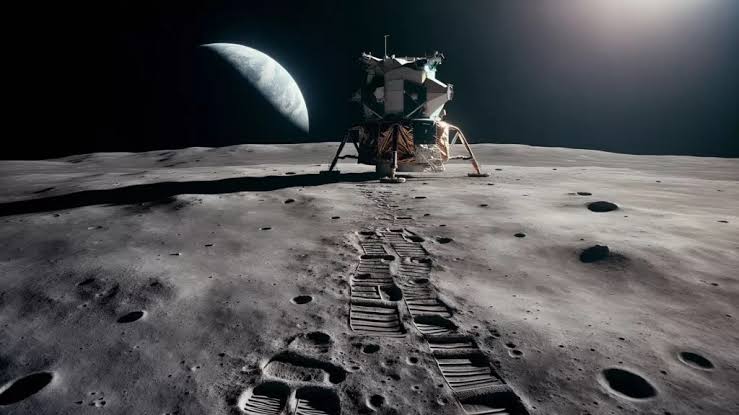Overview
In an extraordinary success for both SpaceX and private spaceflight, the Polaris Dawn mission has achieved history by executing the world’s first private spacewalk. Billionaire Jared Isaacman,41, and SpaceX engineer Sarah Gillis,30, performed a spacewalk on a mission intended to test the limits of human exploration and the place of commercial entities in space. They did this by showcasing cutting-edge spacesuit technology and spacecraft maneuvers. Their accomplishment illustrates the shift in space flight from a domain controlled by the government to one that is becoming more open to private businesses. Elon Musk, the founder of SpaceX, and the company have made great progress toward revolutionizing commercial space exploration with this event.
Polaris Dawn: A New Chapter in Commercial Space Flight
SpaceX's ambitious effort to investigate the potential of private spaceflight includes Polaris Dawn. The trip is funded by Isaacman, a digital entrepreneur and the creator of Shift4 Payments, who has played a key role in advancing commercial space flight. It is being launched from Florida on a Crew Dragon spaceship. This mission comes after the first all-civilian spaceflight to orbit the Earth, Isaacman's Inspiration4 mission in 2021.

In addition to marking a significant advancement for Isaacman and his team, Polaris Dawn also marks a turning point for the space industry. The mission's goal is to develop methods and technologies that may be necessary for upcoming space missions, such as trips to the Moon and Mars. Isaacman and SpaceX are breaking the mold of traditional space exploration, which has traditionally been dominated by national space organizations like NASA and Roscosmos, by embarking on this audacious project.
A Historic First: The Private Spacewalk
Following Sarah Gillis, who also made history as the first non-government person to perform a spacewalk, Jared Isaacman emerged from the Crew Dragon spacecraft at roughly 6:52 a.m. ET on Thursday. People from all over the world were able to see this historic occasion live on SpaceX's website as the two astronauts were connected to the spacecraft during their trip.
The spacewalk itself was only supposed to take about thirty minutes, but it took an hour and forty-six minutes to prepare for and complete the maneuver. The entire process required a number of intricate stages, such as completely depressurizing the Crew Dragon cabin and depending on oxygen supplied by SpaceX-developed spacesuits. Through the use of umbilical cables, these sleek, sophisticated spacesuits allowed the astronauts to stay alive while navigating the vacuum of space.
With the planet 700 kilometers below him in the background, Isaacman offered this moving observation about the view from space: "Back at home we all have a lot of work to do, but from here, Earth sure looks like a perfect world." His description of the wonder and obligation of viewing the earth from such a singular vantage point was spot on.
The Mission's Technology Basis
The spacewalk tested ground-breaking technology in addition to being a symbolic occasion. SpaceX’s Crew Dragon spaceship was loaded with innovative equipment that had to work flawlessly in the harsh conditions of space. A major new development that was tested during the spacewalk was SpaceX's newly designed spacesuit. SpaceX's suits are lighter, more flexible, and have more advanced mobility and life support features than NASA astronauts' bulkier suits.
Procedures for completely depressurizing the Crew Dragon cabin were also tested during the flight; this is an essential step for upcoming spacewalks and maybe longer missions in deeper space. Through the accomplishment of these demonstrations, SpaceX is establishing the foundation for more ambitious missions that may go beyond Earth's orbit.
The Crew: An Innovative Group
Four people make up the Polaris Dawn crew: Scott Poteet, Anna Menon, Sarah Gillis, and Jared Isaacman. The mission's donor, Isaacman, has been pushing the boundaries of what ordinary people can accomplish in space out of a profound passion for space exploration. He is dedicated to promoting commercial space exploration and has funded several flights, including the momentous Inspiration4 mission.
Alongside Isaacman, Sarah Gillis, an engineer for SpaceX, created history by being one of the first private humans to complete a spacewalk. Her experience and technical know-how were invaluable to the mission's design and execution, demonstrating the importance of engineers in furthering space exploration.

Throughout the spacewalk, Scott Poteet, a retired lieutenant colonel in the United States Air Force, and Anna Menon, an engineer with SpaceX, stayed inside the Crew Dragon and gave the two astronauts outside vital support. Poteet and Menon contributed to the mission's overarching goals and used their technical expertise to play crucial roles in its achievement.
For this operation, the team trained for two and a half years, going through demanding simulations and hands-on learning in harsh situations. Their readiness and devotion demonstrate the degree of commitment needed to carry out such a difficult assignment in a safe and effective manner.
Extending the Boundaries of Individual Space Travel
The goal of the Polaris Dawn mission is to push the boundaries of what commercial spaceflight operations can do in addition to the spacewalk. The Crew Dragon spacecraft orbited Earth at different heights during the mission, traveling up to 1,400 kilometers away from the planet's surface. The Apollo missions of NASA in the 1970s marked the furthest human trip from Earth, and this is the current record.
The ability of SpaceX to carry out missions much beyond the International Space Station (ISS), where the majority of human spaceflight operations have been centered for the past 20 years, is demonstrated by this expanded range in orbit. Polaris Dawn is opening up new vistas for private space exploration and laying the groundwork for upcoming trips to the Moon, Mars, and beyond by extending its reach beyond Earth.
The Significance of SpaceX's Mission and Elon Musk's Vision
The Polaris Dawn mission is a component of SpaceX's broader plan to transform space travel. The company's CEO and creator, Elon Musk, has long expressed his goal of facilitating human spaceflight and helping mankind evolve into a multiplanetary species. One mission that aims to advance the procedures and technologies required for future space colonization is Polaris Dawn.
Additionally, the mission confirms SpaceX's dominance in commercial spaceflight. As a result of its sophisticated spacecraft, reusable rockets, and successful crewed missions, SpaceX has emerged as the only commercial enterprise that can regularly launch and retrieve people from Earth's orbit. The Polaris Dawn mission's accomplishments enhance SpaceX's standing as a trailblazer in the space sector.
Collaboration with NASA and the Future of Space Economy
Despite being a private project, Polaris Dawn gains from SpaceX and NASA's close cooperation. NASA has contributed financial support and technological know-how to SpaceX's Crew Dragon spacecraft development during the last ten years. This collaboration is a component of NASA's larger plan to develop a thriving commercial space sector that can support missions for the public and private sectors.
The Polaris Dawn spacewalk was hailed by NASA Administrator Bill Nelson as a "giant leap forward" for the commercial space industry. He underlined that the mission is a step in the right direction for NASA's long-term objective of creating a viable space economy in the US that involves both public and private sector involvement.
Space exploration will be significantly shaped by missions such as Polaris Dawn as the commercial space industry grows. SpaceX and its partners are clearing the path for a time when space travel will be more widely available and commonplace by showcasing the ability of private enterprises to carry out challenging missions in orbit.
From Apollo 11, the furthest distance from Earth
The distance traveled by the Polaris Dawn mission is among its most amazing accomplishments. The Crew Dragon spacecraft reached a maximum distance of 1,400 kilometers (870 miles) from Earth, which is the furthest any human has gone from the planet since the 1969 Apollo 11 mission. The International Space Station orbits the Earth at a height of about 400 kilometers, which is more than twice as high as this distance.
This accomplishment is noteworthy because it shows that SpaceX is capable of carrying out deep-space missions, which is essential for upcoming Moon and Mars exploration. Polaris Dawn has demonstrated that for-profit businesses like SpaceX are capable of pushing the limits of human exploration by safely completing this extended orbit.
Private Space Exploration's Future
The Polaris Dawn mission's accomplishment creates the possibility of private space exploration becoming commonplace in the future. More missions similar to Polaris Dawn are probably in store as SpaceX keeps expanding its capabilities; these missions will all contribute to the advancement of space technology and move humanity one step closer to long-term space residency.

The commercial space industry is expected to grow rapidly in the upcoming years, with SpaceX at the forefront. In this new era of space exploration, other businesses like Boeing and Blue Origin are also creating technology and spacecraft. Together, these projects are altering the way humans engage with space, making it more accessible to individuals outside government astronauts and institutions.
Final Thoughts
One of the most significant accomplishments in space exploration history is the Polaris Dawn mission. Jared Isaacman and Sarah Gillis have pushed the envelope of what private persons and businesses can accomplish in space by leading the first-ever private spacewalk. Their accomplishments and the technological innovations they showcased throughout the mission represent a major advancement for both SpaceX and the commercial space industry as a whole.
It appears that humankind's adventure into space will be successful in the future as long as SpaceX remains at the forefront of private space exploration. We are getting closer to a time when space flight is not possible with every expedition.












